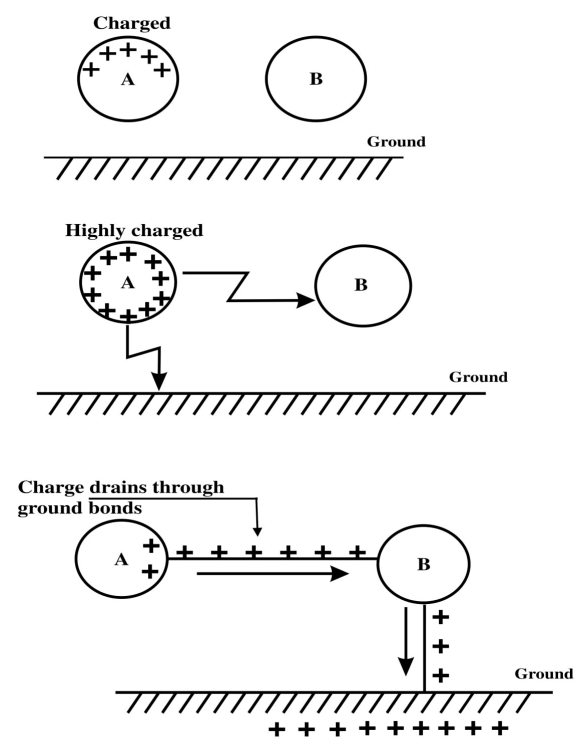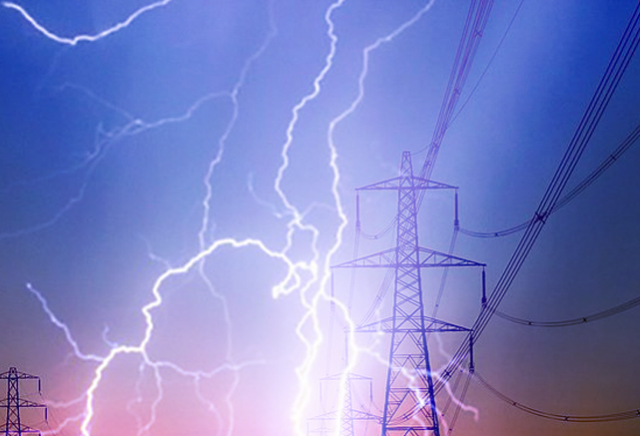What are Static Charges?
Static electricity refers to the accumulation of electric charge on the surface of objects. It occurs when two materials come into contact and then separate, transferring electrons from one to the other. This can result in one object being positively charged (losing electrons) and the other negatively charged (gaining electrons). Static charges remain stationary on the surface until they are discharged.

Common causes of static electricity
- Friction
- Rubbing materials together, such as walking on a carpet.
- Induction
- Proximity of a charged object that causes redistribution of charges without direct contact.
- Separation
- When different materials are pulled apart, such as removing plastic packaging.
Dangers of Static Electricity
While static electricity may seem harmless, in certain environments, it poses serious risks
- Ignition Hazard
- In areas where flammable vapors, gases, or dust are present (like oil refineries, chemical plants, or grain silos), a spark from static discharge can ignite an explosion.
- Equipment Damage
- In electronics, a static discharge can damage sensitive components, which is a common concern in manufacturing and handling.
- Shock to Personnel
- Though usually minor, static shocks can affect individuals, especially in environments with low humidity, where static charges are more likely to build up.
Bonding and Grounding
To manage and control static electricity, bonding and grounding are critical.
Bonding refers to connecting two or more conductive objects with a conductor to ensure they are at the same electrical potential. This prevents static discharges between them because there is no voltage difference.
Grounding involves connecting objects to the earth with a conductive path, allowing excess charges to dissipate safely into the ground. Grounding effectively prevents charge buildup and eliminates the potential for hazardous static discharge.
The Importance of Bonding in Preventing Static Hazards
Bonding is particularly important in environments where flammable or combustible materials are handled.
- Tanks and Containers
- During the transfer of flammable liquids, bonding ensures that containers and hoses are at the same electrical potential, avoiding sparks.
- Pipelines
- Bonding reduces the risk of static discharge during the movement of flammable gases or liquids.
- Vehicles and Aircraft
- Fueling operations require bonding and grounding to prevent static charges from igniting fuel vapors.
How Bonding is Achieved?
Bonding is typically achieved by using conductive wires or clamps to connect equipment. In practice, bonding cables are attached to all containers, hoses, and metallic objects that could carry static charges.
Example: During the fueling of an airplane, a grounding wire is attached between the fuel truck and the aircraft. Without this connection, a static discharge could ignite fuel vapors around the refueling nozzle.
Grounding for Personnel Protection
Grounding is also essential for personnel working in hazardous environments.
- Anti-static wrist straps
- Workers handling electronics or operating in explosive atmospheres often wear wrist straps connected to ground to prevent static buildup.
- Static-dissipative footwear and mats
- In certain industries, personnel wear special footwear and use grounded mats to safely dissipate static electricity.
Conclusion
Both bonding and grounding are essential practices to control static electricity, preventing dangerous discharges that can lead to explosions, equipment damage, or personal injury. In environments where flammable materials are handled, these practices are critical for maintaining safety.
References:
Practical Grounding, Bonding, Shielding and Surge Protection
Vijayaraghavan, G.
ISBN 0-7506-6399-5
Newnes publications
